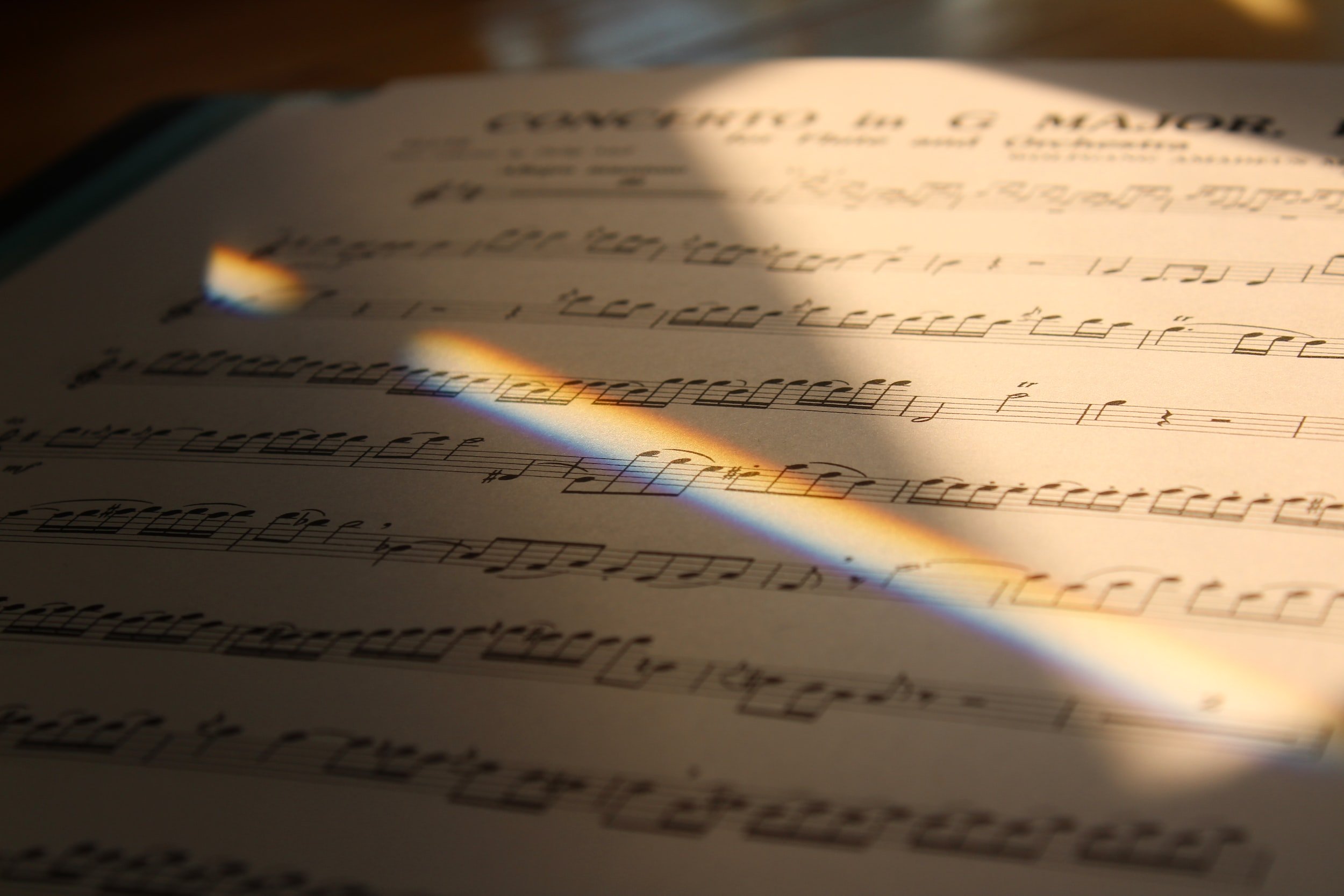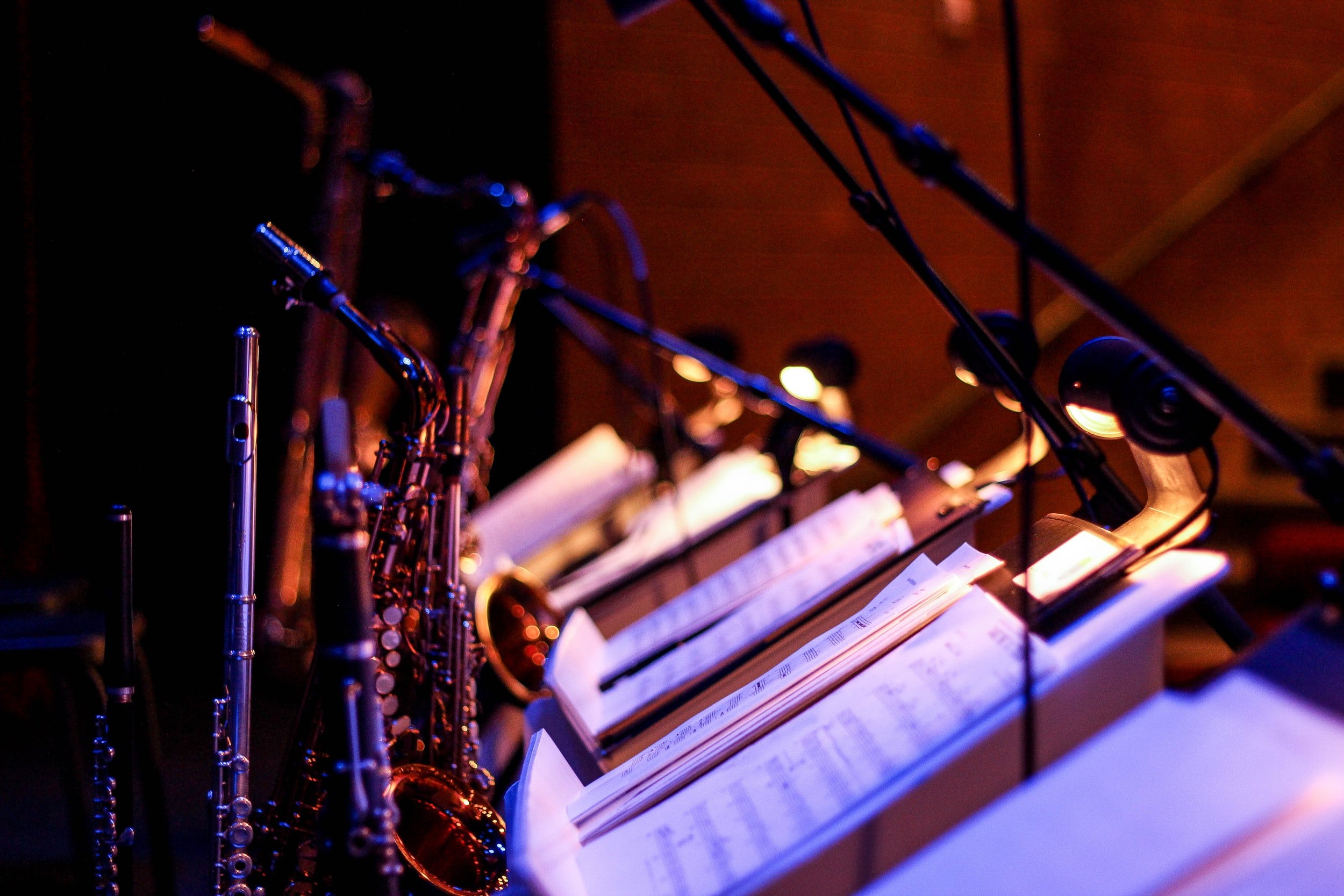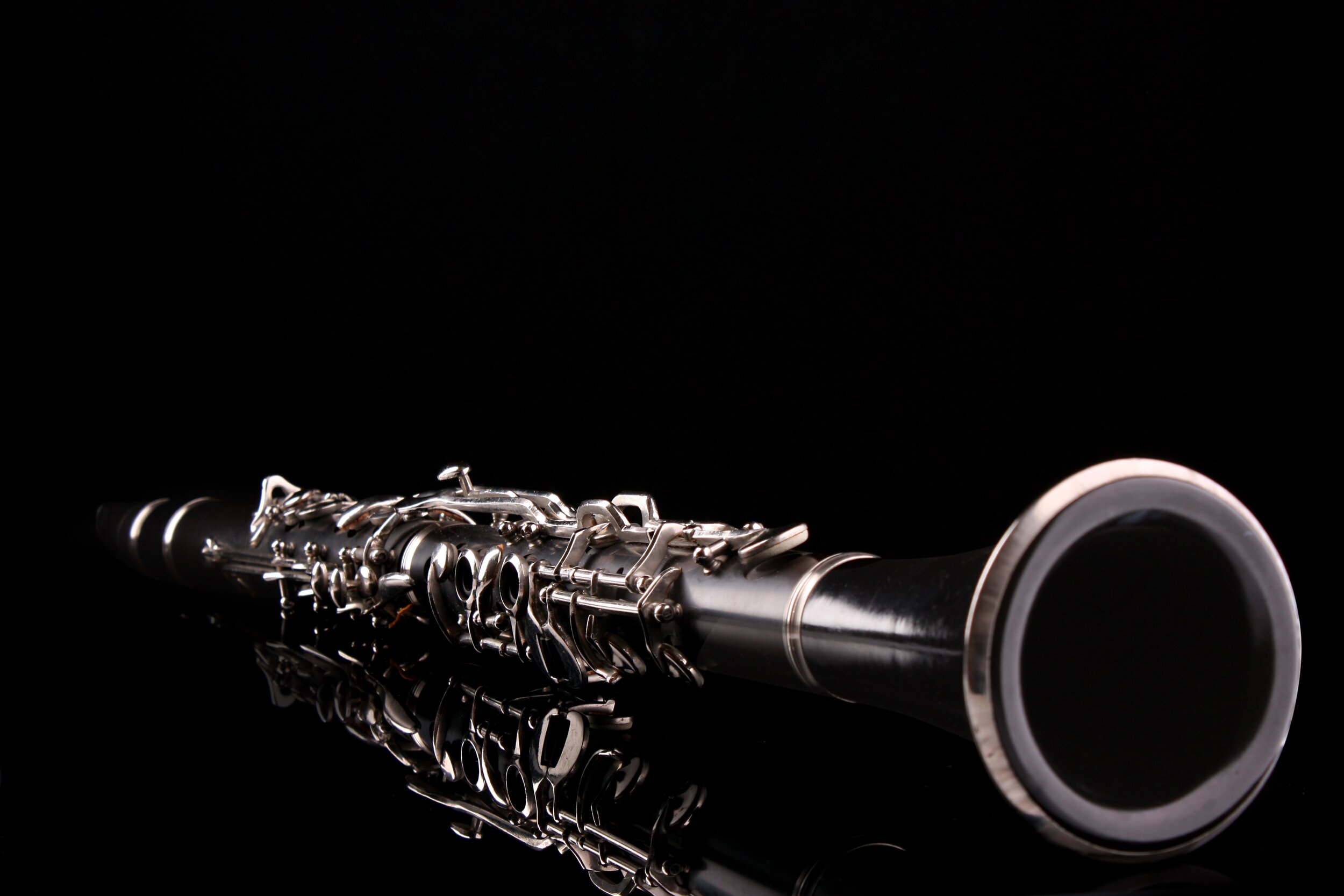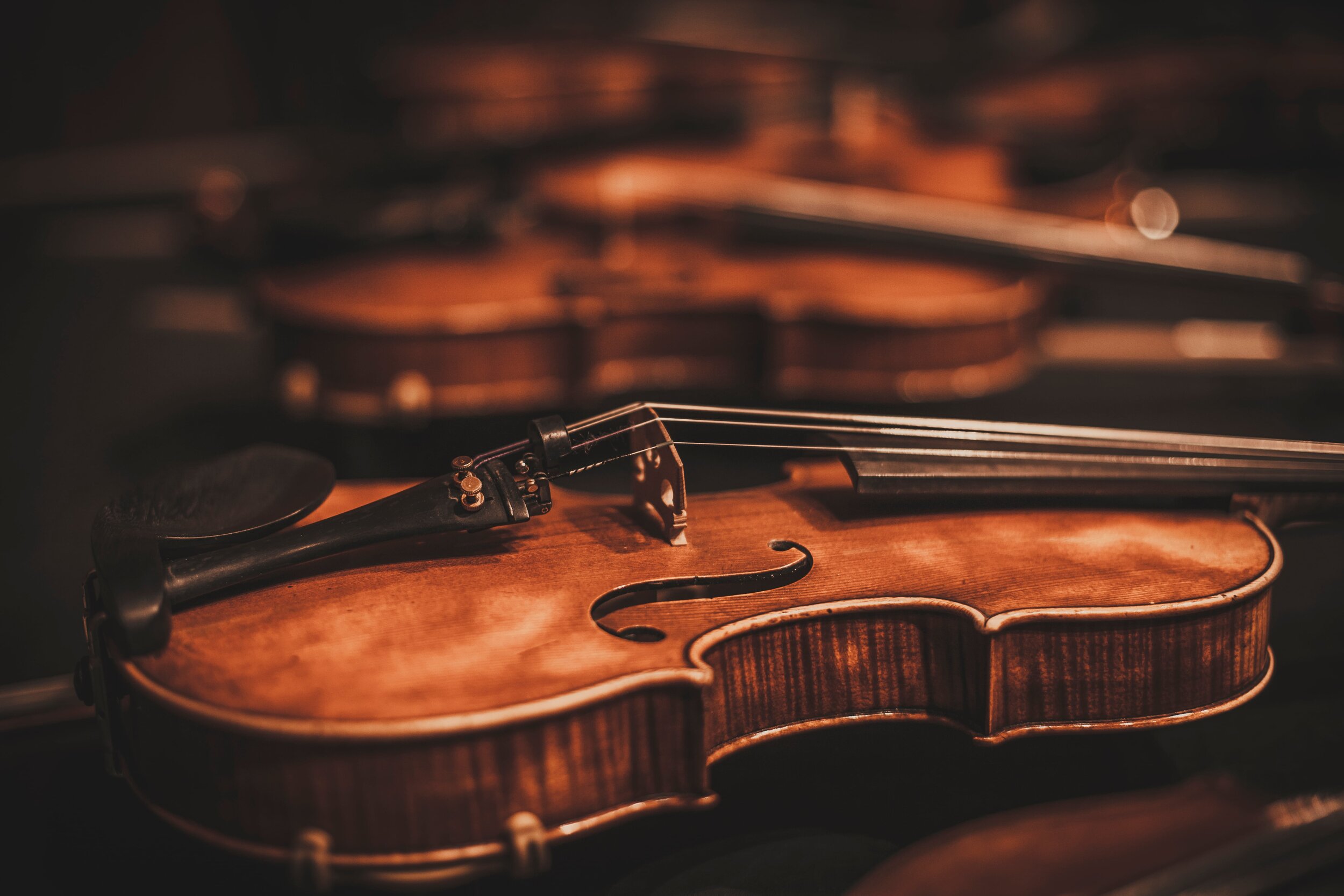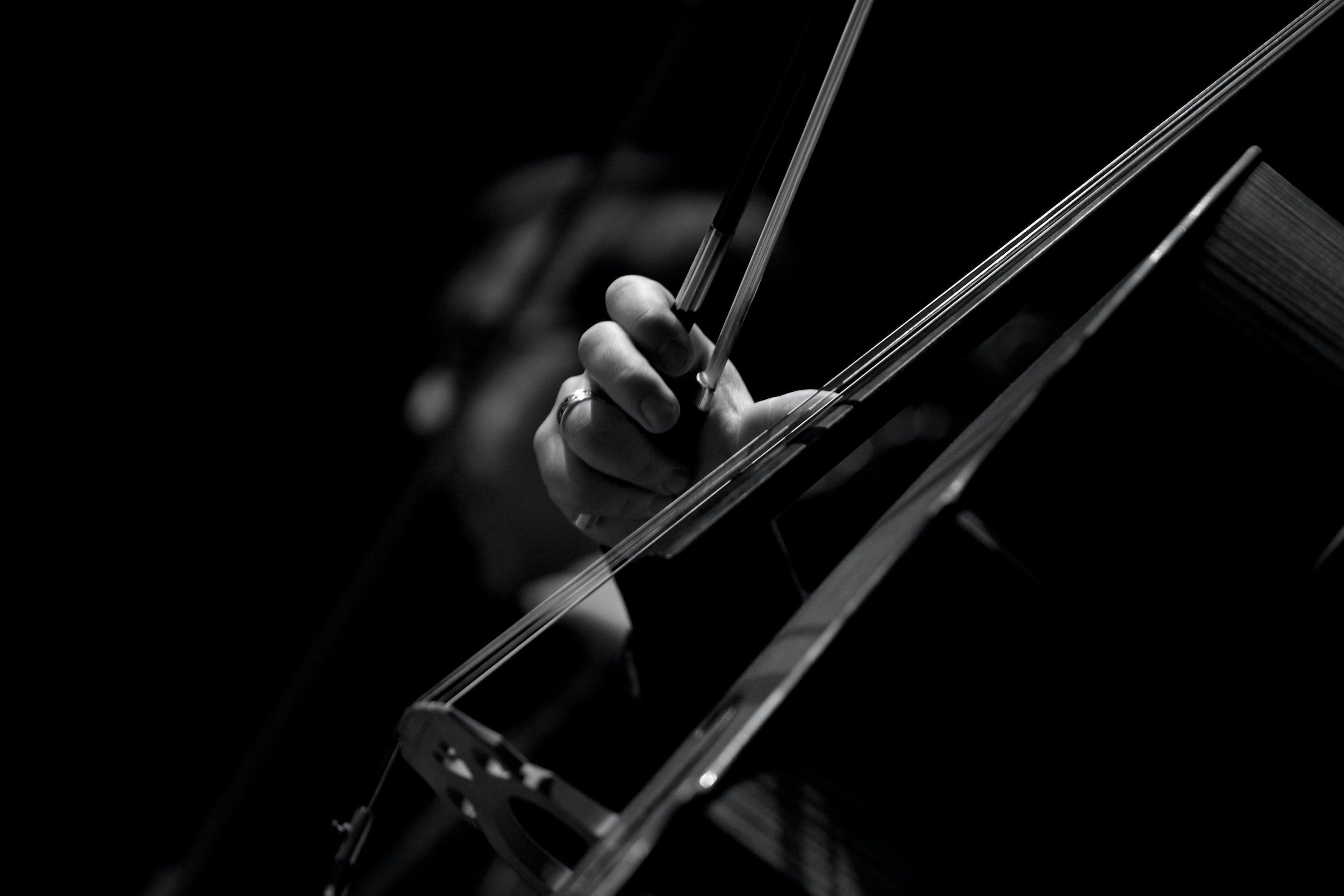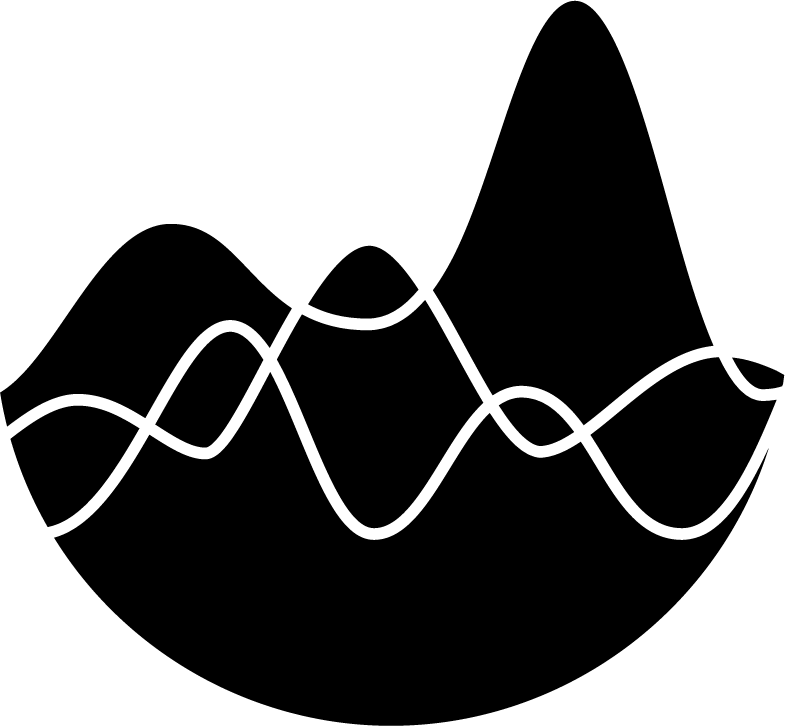Harp | Scoring
Music for harp is usually written on a grand staff, similar to piano music. Most of the time, the top staff should be in treble clef, and the bottom staff in bass clef. As a reminder, the order of pedals are as follows:
Chords containing up to eight notes are possible and common. Thicker voicings, often with
several doubled pitches, are particularly resonant, while thinner voicings can sound meek and
hollow. Block chords are normally rolled upwards. Most often, the last note of this brisk
arpeggiation will coincide with the downbeat. To add more expression, specifically at slower
tempos, the ![]() show the
direction of the roll. For blocked chords that should not be arpeggiated, bracket the chord
or write the term ‘non-arp.,’ cancelled out by the term ‘ord.’
show the
direction of the roll. For blocked chords that should not be arpeggiated, bracket the chord
or write the term ‘non-arp.,’ cancelled out by the term ‘ord.’
The strings of the harp lie closer together than the white keys of the piano. While pianists with small hands often struggle to extend beyond an octave in one hand, harpists can easily reach tenths. Hand placement is slightly different than the piano. In the diagram below, notice that a piano player’s thumbs oppose one another, while for harpists, both thumbs are on top.
Because the span from thumb to second finger is larger than that between other fingers, it is easiest to play a largest interval between these fingers. In the example below, the first chord, playable on piano, is unidiomatic, if not impossible, on harp. The second chord is easy to perform on this instrument.
Many types of linear gestures are idiomatic to the harp:
Single line melodies can be played in a variety of registers. Higher melodies are crisper and brighter than low ones.
Doubling a melody one or two octaves lower adds volume and body.
Scales and scalar effects, played as single pitches, doubled at the octave, or played in parallel intervals are easy to perform.
Single line arpeggiations may be divided up between the hands. In this case, they should be divided into groupings of no more than four pitches. If both hands play independent arpeggios, they may be in parallel or contrasting motion.
Melodies with simple chordal or arpeggiated accompaniments are
The harp cannot easily play five note groupings in one hand. Highly contrapuntal passages are tricky. Alberti bass and other arpeggiated gestures that switch directions are more difficult to execute than those in a single direction figures.
The possibility of swooping up or down virtually any scale or chord with ease has made glissandos the number one hit of the harp. Certainly harp glissandos can work magic. But beware, orchestrators, of overusing this technique. Though a single glissando can work magic, like any effect, an overabundance can sound clichéd and unimaginative. By reserving glissandos for special moments, it is possible to add that extra special panache to a passage.
Glissandos are possible with the right hand, left hand, or both. They may ascend, or descend, and can be played in any range of the harp at virtually any dynamic level. They cannot, however, skips strings. For this reason, all of the strings must be tuned accordingly. Seven-note scales or exotic sets of pitches may be arpeggiated. Through the use of enharmonics, it is possible to gliss as few as four sounding pitches, making many kinds of 7th chords possible. Observe the pedal setting for the following chordal glissandos.
To indicate a glissando, write the first seven pitches as 32nd notes, making it is clear how the pedals should be set. (If the pedal settings are already clear it is possible to simply write the first note of the gliss.) Slightly extend the three beams, and draw a diagonal line from the seventh pitch indicating the direction of the glissando. Show the final note of the gliss, and make sure it is clear where it should begin and end metrically.
Several types of glissandos are possible:
- Single note glissando. Performed with one hand, as flesh of finger moves across strings.
- Two-handed parallel glissando. Hands move in parallel motion.
- Two-handed glissando in contrasting motion. Hands cross during the gliss.
- Ascending double-note glissandos. A single hand may gliss upwards in thirds or fourths. Both hands may simultaneously perform this technique, allowing for up to four notes. Downwards glissandos are performed with the thumb and may only be singles notes in each hand. Multiple note glissandos cannot be played louder than forte.
- Cascading glissandos. Alternating hands, descending, creating a falling, cascading effect. A similar effect is possible when moving upwards.
- Glissandos with pedal changes. Pedal changes are possible during a glissando.
- Fingernail glissando. A glittery, metallic sound is added to the gliss. Indicated by
 or with fingernails, this technique only works at quiet dynamics, fromppp tomf, and with descending gestures. This technique is not possible when ascending. Return to normal playing by writing ord.
or with fingernails, this technique only works at quiet dynamics, fromppp tomf, and with descending gestures. This technique is not possible when ascending. Return to normal playing by writing ord. - Plectrum glissando. Similar to fingernail gliss, ascending and descending glisses are possible with a guitar pick, and are playable at dynamics f and lower.
One final type is the pedal glissando. This technique entails changing the pedal position soon after the note has been plucked. More effective in the lower register, pedal glisses normally alter the pitch a half step, though it is possible to move from the flat to the sharp position (this is difficult the other way around, though). The pedal gliss works best on octaves, as opposed to single pitches. It is possible to perform two pedal glisses at a time, assuming different feet operate the two pedals. A related technique is the pedal trill, or quick alternations of the pedal between flat and natural or natural and sharp positions.
Though trills can be performed slowly with a single hand, they are weak and impractical. Twohanded trills are much more effective, and speak clearly in higher registers. By doubling one of the trilled pitches enharmonically, the clarity and effectiveness of the trill increases. It is also possible to tremolo a single pitch on harp, in a similar manner to a two-handed trill, as long as the pitch can be spelled enharmonically.
Tremolo chords of three to eight notes are possible as well, by rapidly alternating between all of the pitches. A technique called bisbigliando, which means “whispering” or “murmuring”, is often employed for tremolo chords, creating a delicate, crackly effect. As with trills, use as many enharmonic equivalents as possible.
Slurs are more ambiguous in harp music than with strings or winds. Normally, they are placed over glissandos and tremolos, and are used to show phrases. A passage with a slur may be played identically to the same phrase without one. Accents may be applied to any non-slurred pitch, or one that begins a slur.
On most instruments, a staccato means less work for the player. Contrastingly, on the harp, staccatos actually take two actions. Immediately after plucking the string, the player must physically dampen it. Because this takes time, staccato passages are only possible at moderate or slow tempos. Staccatos can be applied to single pitches, octaves, or chords.
To indicate that all pitches should be “choked,” the word ‘Étouffez,’ or the symbol![]() below the bass clef staff, should be written. This indicates that hands should dampen all strings. An open-ended slur, or ‘l.v.’ (let vibrate), ensures that the strings are allowed to vibrate freely without being muffled.
below the bass clef staff, should be written. This indicates that hands should dampen all strings. An open-ended slur, or ‘l.v.’ (let vibrate), ensures that the strings are allowed to vibrate freely without being muffled.
Harp harmonics create a beautiful, bell-like timbre. They sound one octave higher than the written pitch, but should be notated where they are played, not where they sound, with a small circle placed over the note. This technique is possible only mf and softer (a harmonic played f will not sound much louder than one marked p), and is effective only on pitches that fall within the treble and bass clef staves. Harmonics are more complex to perform than ordinary pitches, diminishing a harpist’s technical facility.
Both hands can play harmonics, and the left hand can actually execute two at a time, as long as the interval between the two doesn’t exceed a fourth. Harmonics in one hand are commonly combined with ordinary pitches in the other. It is even possible to double a pitch at the unison, by playing a lower pitch as a harmonic, and the note an octave above as a normal pitch. This amplifies the sound and gives it a more resonant, “chorus-y” tone. For a grace note effect, one of the notes is played slightly before the other.
A nasal, brittle, guitar-like timbre is produced by playing prés de la table (P.D.L.T.). Strings are plucked at the bottom, by the soundboard, where they are least resonant. Because this necessitates a larger distance between pitches, the hand cannot span more than an octave, and technical facility is diminished. P.D.L.T. is possible at dynamics f and lower, and is cancelled out by the term “ord.”



